The violent nature of leftism goes back to its roots in the French Revolution, and continue today.
Part One: A Tale of Two Revolutions
From its earliest roots in the bloody days of the French Revolution, the Left [1] has demonstrated a ready tendency to use political violence against its opponents.
A quick look at both the French and the American revolutions, often portrayed in popular culture as twin-sides of the same movement toward democracy, will reveal that, quite to the contrary, these were two very different political experiences.
The American Revolution was a revolution started and led by fairly well-heeled and well-educated landowners, lawyers, and clergymen. The French Revolution, on the other hand, was started by the Paris mob (the sans-culottes, the “pantless”) led by demagogic leaders who manipulated and inflamed their most base and violent passions. The American Revolution could be characterized as a “conservative” revolution which sought to preserve the traditions of self-government, individual liberties, and private property that had been a hallmark of life in the Thirteen Colonies for over a century. The French Revolution was very much a “left-wing” revolution, which sought a transformation of French society through massive redistribution of wealth and through the arrest and murder of the wealth-holding class.
The French Revolution, which has been the model (and often inspiration) for all leftist revolutionary movements since, was heavily influenced by the writings of Jean-Jacques Rousseau, its patron philosopher. It was characterized by class hatred by the poor for those born to better circumstances. Its educated and mostly middle-class leaders declared that the very condition of being born into the aristocracy made one a criminal; a traitor against the “general will” of the mass of the French people. The French Revolution was all about class envy, the desire to destroy the wealthy and “well born”, and to produce a new order promoting the equality of all citizens. “Liberty, Equality, Fraternity”.
By contrast, the American Revolution was influenced by the writings of John Locke and Adam Smith. It was all about preserving private property rights, less-government, lower taxes, personal liberty and responsibility. Their motto was “Don’t Tread On Me”. Its leaders were (mostly) wealthy or at least upper-middle class landowners and “professionals”.
The French Revolution began with a Parisian mob storming the prison/fortress, the Bastille. 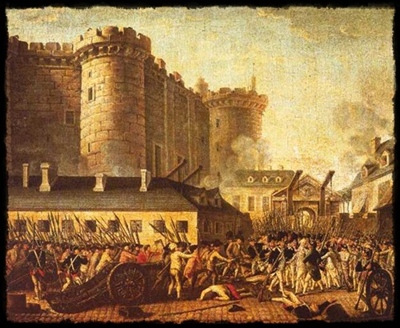
Hollywood has too often portrayed this as an armed mob of patriotic (and starving) Parisians fighting their way heroically into the prison/fortress; opposed by troops within, who further inflamed the mob and earned their coming fate by firing upon “the people”.
Here is an example, in the 1958 version of Dickens immortal, “A Tale of Two Cities”:
This version is far from the reality of what occurred!
In truth, the garrison of the Bastille (a prison which held, literally, a handful of prisoners) put up no resistance. For hours, the mob waited outside while the governor of the prison, the Marquis de Launay, attempted to negotiate a peaceful surrender. For his trouble, he and many of his men were murdered by the mob once they were admitted; leading to the spectacle of de Launay’s head being marched through the streets on a pike! Also that opening day, the mob seized and murdered the Mayor of Paris, Jacques de Flesselles; a reform-mined civil-servant of middle-class origins, killed just on general principles!
The American Revolution began in quite a different manner: with the British attempting to forcibly disarm the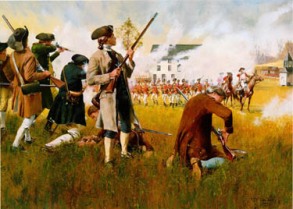 Massachusetts colonial militia, sending Redcoat troops to seize the militia’s arms at Concord. What followed was anything but mob violence. Militia-men battled with Redcoats. No mobs swarmed in the streets, no British officials or “Tories” (British loyalists) were lynched.
Massachusetts colonial militia, sending Redcoat troops to seize the militia’s arms at Concord. What followed was anything but mob violence. Militia-men battled with Redcoats. No mobs swarmed in the streets, no British officials or “Tories” (British loyalists) were lynched.
In Revolutionary France, under the direction of Maximilien de Robespierre, the  demagogic leader of the extreme Jacobins, a “Reign of Terror” followed the establishment of a “liberal” Republic. Thousands of heads would (literally) roll in Paris and the other cities of France. Daily, the “progressive” citizens of Paris jeered, taunted, and threw garbage at victims of the Terror as they were walked from their imprisonment to the guillotine.
demagogic leader of the extreme Jacobins, a “Reign of Terror” followed the establishment of a “liberal” Republic. Thousands of heads would (literally) roll in Paris and the other cities of France. Daily, the “progressive” citizens of Paris jeered, taunted, and threw garbage at victims of the Terror as they were walked from their imprisonment to the guillotine.
No one was safe. Even children were beheaded, their crime one of class, of being born into wealth or the aristocracy. Even servants of the noble houses, themselves people of no financial means, were executed by the mobs.
Lies and character assassination was then, as now, tools of the leftist agitators in the years preceding the Revolution. During the Reign of Terror many thousands were accused of the most heinous lies and subject to judicial murder. A notable example was the Queen, Marie Antoinette. A virtuous wife and mother who gave generously to the poor and even entertained the under-privileged in the Royal Palace prior to the Revolution, she was painted by the left as a selfish, greedy, and licentious wanton. During her incarceration, the Revolutionary prosecutors accused her of everything short of Devil worship (including incest!) in order to blacken her name and remove any sympathy for her amongst the people. She was subjected to a “show trial” (characteristic of later Marxist revolutions), in which she was given no chance to defend herself. The former-queen who was taken to execution in the end was a shockingly aged and broken creature; an innocent and undeserving victim of the left.
heinous lies and subject to judicial murder. A notable example was the Queen, Marie Antoinette. A virtuous wife and mother who gave generously to the poor and even entertained the under-privileged in the Royal Palace prior to the Revolution, she was painted by the left as a selfish, greedy, and licentious wanton. During her incarceration, the Revolutionary prosecutors accused her of everything short of Devil worship (including incest!) in order to blacken her name and remove any sympathy for her amongst the people. She was subjected to a “show trial” (characteristic of later Marxist revolutions), in which she was given no chance to defend herself. The former-queen who was taken to execution in the end was a shockingly aged and broken creature; an innocent and undeserving victim of the left.
But not only “class enemies” of the left were murdered. The revolution soon consumed its own as the radical Jacobins denounced and sent to the guillotine their political rivals and sometime allies within the National Assembly. Then even the most radical leaders, like 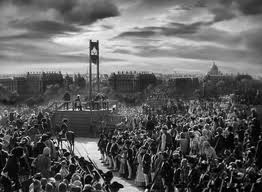 Robespierre, were in turn denounced by newer and even more extremist “leaders” and took their turn with “Madam Guillotine”.
Robespierre, were in turn denounced by newer and even more extremist “leaders” and took their turn with “Madam Guillotine”.
Murder and mob violence characterized these first leftist revolutionaries’ approach to politics.
By contrast, in America following the Declaration of Independence by the duly-chosen Continental Congress, there were no wholesale murders of anyone. Military campaigns between the newly constituted Continental Army and the British Army would rage up and down the 13 Colonies. But political murder in the streets was virtually unknown[2].
American “Patriots” were arrested by the British, as were their families on occasion; and some of these died in captivity or from its result. Pro-British sympathizers were not persecuted by their Patriot neighbors, though many Tories who took up arms in support of the Crown left the country after the war ended in American victory, most relocating to Canada. But none were forced to leave, arrested, or murdered[3]. Yes, Tories were on occassion subjected to the humilation of being tarred and feathered. Unlike the leftist French leaders such as Robespierre, who orchestrated the mob violence, such Founders as John Adams denounced such practices as “barbaric”.
In summary, the divide between the Right and Left can be seen at the very inception of this political divide, with the American and French Revolutions. One a fight by the upper and middle class Americans to protect their liberty and property from British interference and confiscation. The other, the French, by the lower classes to seize the property of others and redistribute it for the “common good” (more precisely, their own).
The American (conservative) Revolution was fought against British soldiers, not against their neighbors. The French (leftist) Revolution, though it led to conflicts with foreign powers, was all about mob violence and class warfare against fellow citizens. In the former, those who disagreed with the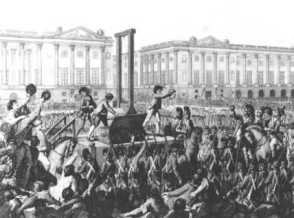 “patriot” point of view were not attacked; and after the war, no reprisals were taken against. In the latter, any perceived opponent was in danger of being murdered by the mob or the revolutionary authorities.
“patriot” point of view were not attacked; and after the war, no reprisals were taken against. In the latter, any perceived opponent was in danger of being murdered by the mob or the revolutionary authorities.
A tale of two revolutions: the beginning of a political divide that continues to this day.
PART 2 Breaking Eggs to Make Utopia
- So-called because the original leftists in French politics sat on the left side of the Chamber of Deputies in the National Assembly.
- Though British officials in Massachusetts were, on occasion leading up to the Revolution, the targets of beatings and even being “tarred and feathered“.
- Contrary to what was shown on the 2008 miniseries John Adams, this ugly, humiliating practice was never fatal; as pine tar, a sticky liquid at room temperature, was used instead of scalding-hot petroleum-based tar.

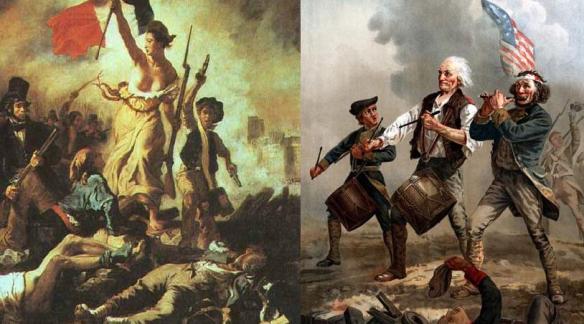
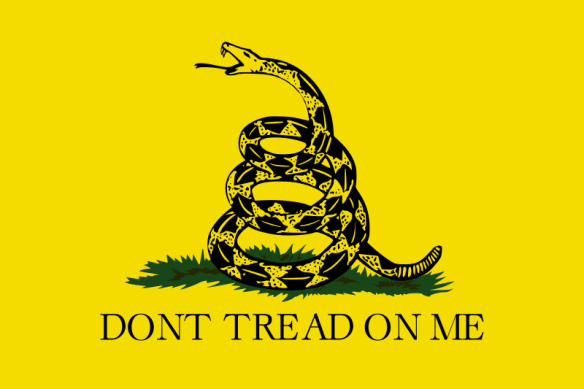
Pingback: VIOLENCE ON THE LEFT: IT’S IN THEIR DNA (2) | Word Warrior of So Cal
Pingback: VIOLENCE OF THE LEFT: ITS IN THEIR DNA (4) | Word Warrior of So Cal